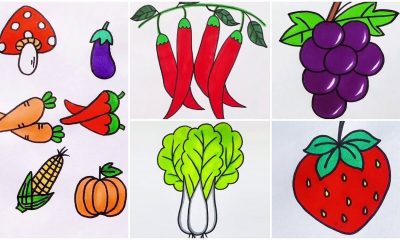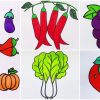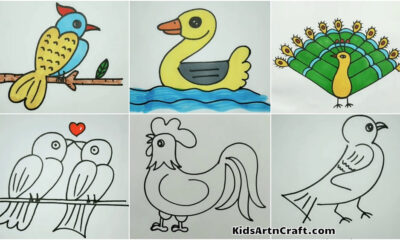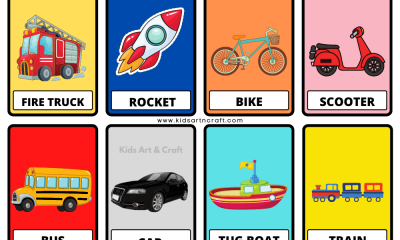Kids Activities
Science Projects for Grade 5 Students

If you enjoy science and are always looking for new methods to learn more about it, then today’s science project ideas are ideal for you. We strive to provide students with new and exciting ideas to help them improve their skills, and I am confident that today’s scientific project ideas will provide you with a wealth of practical information while also assisting you in learning common science topics quickly.
Furthermore, you do not need to purchase any expensive items from the market to try these experiments, and they are quite simple to put together, which will help to improve your creativity and expertise. So, let’s get this party started!

Pinwheel Craft Made With Popsicle Sticks & Plastic Bottle
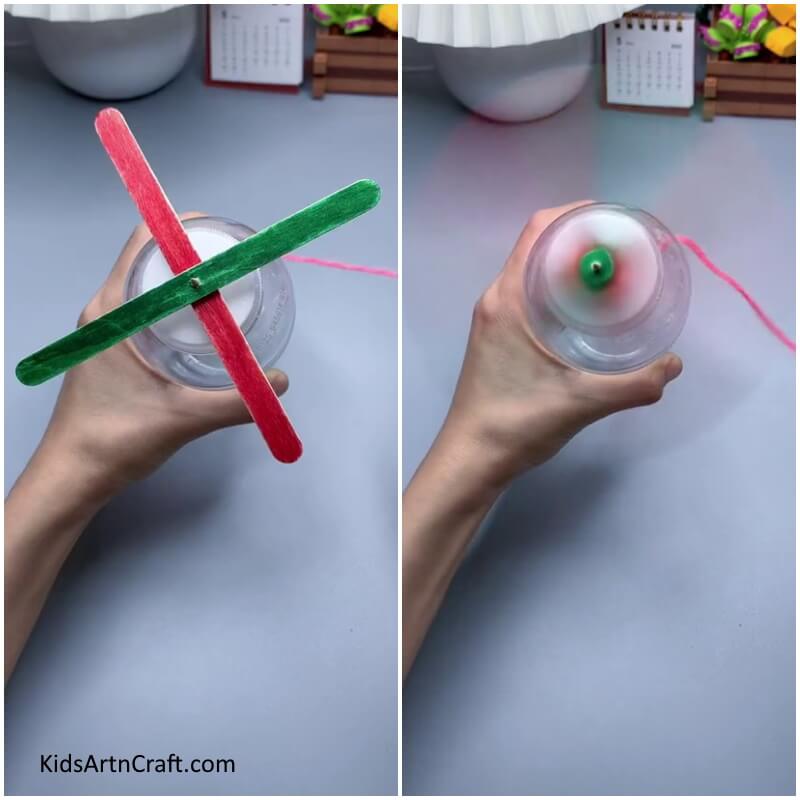
Image Source/Tutorial: Kids Art & Craft
This pinwheel craft is a fun and creative way to upcycle materials. It uses popsicle sticks and a plastic bottle to make the perfect pinwheel that is perfect for decoration or a kid’s craft. It’s an easy project that is sure to bring hours of fun!
Easy To Way Drinking Fountain Craft For Young Ones

Image Source/Tutorial: Kids Art & Craft
This drinking fountain is the perfect way to teach young ones to craft and be creative. It is made from durable materials and is easy to install. With the fun and colorful design, kids will enjoy drinking from it. It is also a great way to encourage healthy drinking habits.
Easy To Make Lamp Using Orange Peel
Making a lamp out of orange peel is an easy and creative way to recycle and upcycle. It’s also a great way to create a unique, natural lamp and bring a bit of nature into your home.
Car Craft with Balloons and straws as a science project
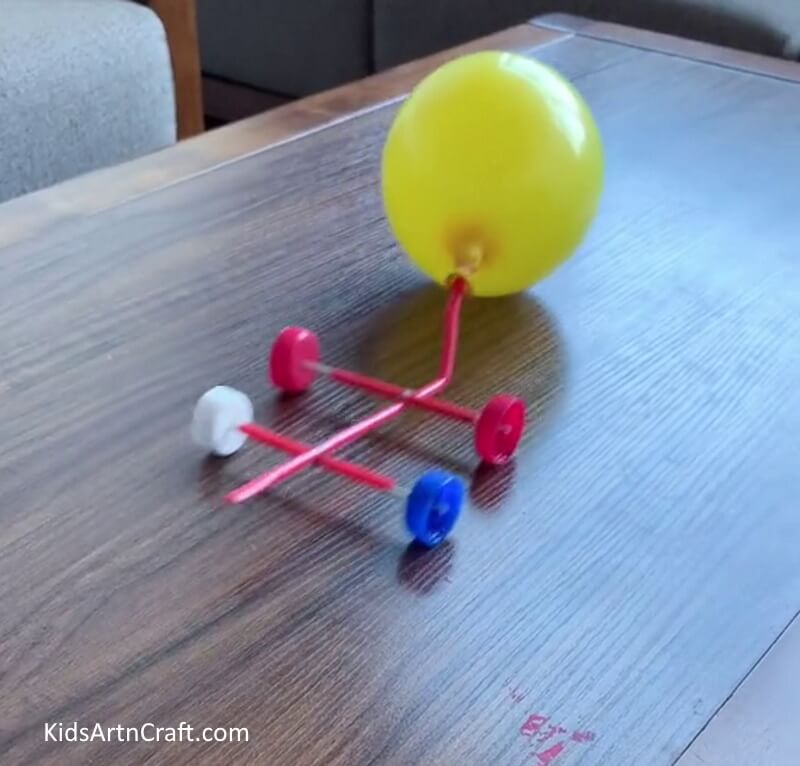
Image Source/Tutorial: Kids Art & Craft
This fun and creative science car project for students is a great way to keep them entertained over the weekend! With just a few balloons and straws, children can make their own homemade car that they can play with and show off to their friends.
Learn To Make Beautiful Handprint Flying Rocket Craft For Toddlers

Image Source/Tutorial: Kids Art & Craft
This fun craft is perfect for toddlers. It is easy and fun to make and requires minimal materials. With this craft, you can teach your children to make a beautiful handprint flying rocket craft that will be sure to delight!
DIY Vibrant Water Rainbow For School Project

Image Source/Tutorial: KidsArt&Craft
This school project is a great way for kids to explore the science of light and color. They will create a vibrant water rainbow that is sure to attract attention. With some simple supplies, they can make a captivating art project that will be the talk of the class!
Creating A Boat From A Bottle And Rubber Bands For Kids
Making a boat from a bottle and rubber bands is a fun craft activity for kids. It’s also a great way to recycle materials, encouraging sustainable practices.
Stem Activity
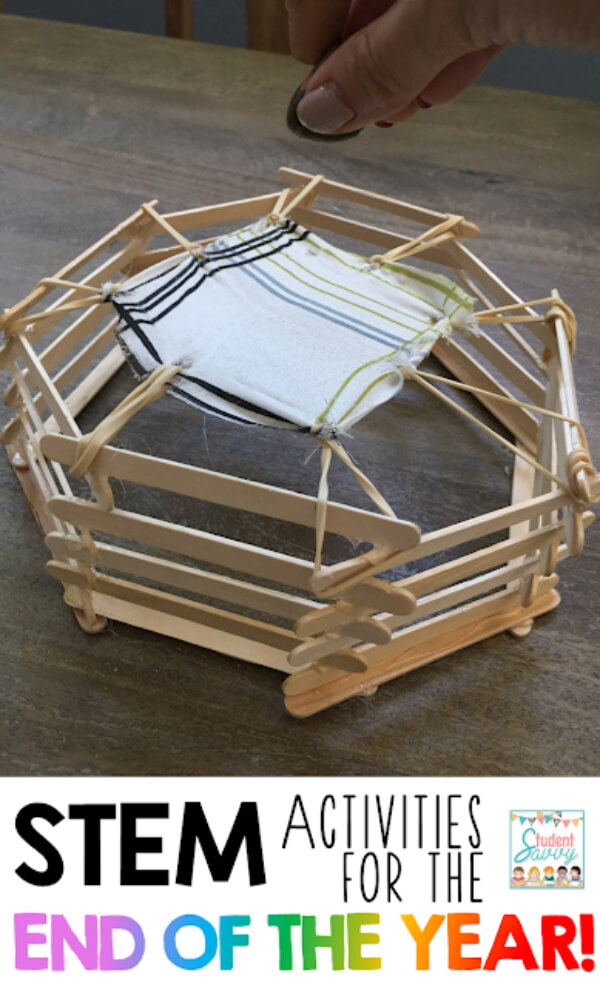
Image Source/Tutorial: Teach Student Savvy
Real learning does not have to be abandoned just yet; it only needs to be disguised in such a way that it does not appear to pupils to be learning… However, it is still the case! Students must build a stick trampoline that can bounce an object (such as a marble) after being dropped from a height of 12 inches (1 foot). They must calculate the bounce height and construct the gadget that produces the highest bounce.
The Leak-Proof Bag

Image Source/Tutorial: Steve Spangler Science
Who’d have guessed that a plastic bag, some water, and a few pencils could send folks into a panic? Discover how to poke holes in a water-filled plastic bag without leaking a drop That’s the hypothesis you’re going to put to the test and it’s a good idea to practice your liquid trick in the sink first. It’s an entertaining approach to learning about polymer chemistry.
Tornado In A Bottle Science Experiment

Image Source/Tutorial: Cool Science Experiments Headquarters
Is it possible to produce a glitter tornado with just one bottle? You can do it with a little muscle and centripetal force! With this simple science experiment, you can make your own bottled cyclone. To begin, gather your items and follow the instructions. Then look into how and why the vortex is created.
Floating And Sinking Pop Cans Science Experiment

Image Source/Tutorial: Cool Science Experiments Headquarters
Gather your materials and join us in this experiment. Just make sure all of your cans are the same shape, size, and volume (12 FL OZ or 355 mL), and that you have a mix of regular and diet pop. The experiment is a quick and easy density test that only takes approximately 5 minutes to complete.
Invisible Ink With Baking Soda

Image Source/Tutorial: ThoughtCo
In just a few minutes, you can manufacture harmless, invisible ink with baking soda (sodium bicarbonate.) Baking soda has the advantages of being safe (even for children), easy to use, and commonly available. All you’ll need is baking soda, paper, water, a light bulb (heat source), a paintbrush or swab, a measuring cup, and purple grape juice to make this (optional).
Crystal Snowflake Ornaments

Image Source/Tutorial: Little Bins for Little Hands
Prepare to make your own sparkly, indoor snowflakes as the flakes begin to fall. Perhaps you dwell among the palm trees and fantasies of snow gently falling. Our lovely crystal snowflake ornaments are simple to manufacture in either case! With our simple borax crystal growth recipe, you can enjoy your crystal snowflake ornaments all winter long! Winter science activities for kids are one of our favorites.
Soil Erosion Experiment

Image Source/Tutorial: Life Is A Garden
This may appear to be a simple experiment, but it will clearly demonstrate to your children the value of having vegetation cover the soil! This hands-on experiment will be a hit with them! You will need the following items to complete this experiment: 6 empty coke bottles, 1 x piece of plywood (30cm x 30cm x 2cm thick), Wood glue, Scissors and Stanley knife, String Compost and soil from the garden 4 seedlings, a layer of mulch (bark chips, dead leaves, and sticks), and some water
Simple Science Experiment: DIY Bouncy Balls

Image Source/Tutorial: Babble Dabble Do
Common household items can be used in the best science experiments for kids. Special kits or difficult-to-find materials aren’t required, though they might be enjoyable to have in your repertory. Common household items can be used in the best science experiments for kids. You don’t need any special kits or difficult-to-find materials, though they might be interesting to have in your repertory; all you need to do is raid your pantry.
STEM Challenge – Build A Snack Mix Machine

Image Source/Tutorial: Left Brain Craft Brain
Today’s challenge is for you and the kids. Make your very own Snack Mix Machine. Why? Because it’s enjoyable! It also teaches about a crucial aspect of engineering: basic machines. I am convinced that learning opportunities at meal and snack times have a significant influence. This one is ideal for a scout meeting or a school gathering. Alternatively, you may have a great family night at home.
Ice Melting Experiments

Image Source/Tutorial: Little Bins Little Hands
Prepare to incorporate this simple ice experiment into your science curriculum this season. Let’s look into what causes ice to melt the fastest. Ice is a fantastic opportunity to investigate physical transformations, particularly states of matter and the transition from liquid to solid. This is an experiment. Easy to set up and quick to perform, most activities take only 15 to 30 minutes and are a lot of fun! Plus, most supply lists include just free or low-cost products that you may find at home!
Exploring Fluorescence
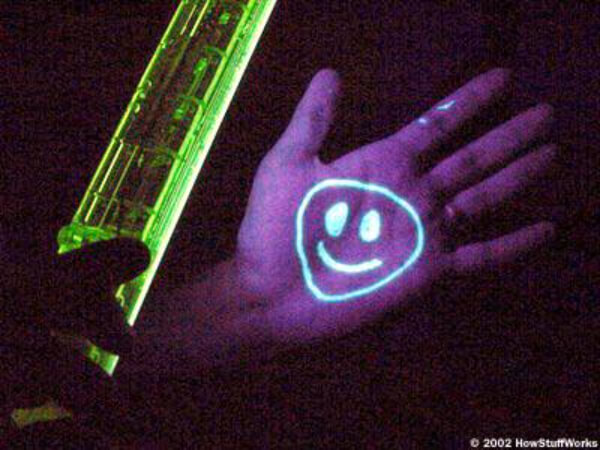
Image Source/Tutorial: Supply me
Black lights are not only attractive, but they can also be extremely beneficial. Investigation of a crime scene. Have you ever wondered why some products or fluids sparkle while others don’t under these unique lights? Try this project with students who appreciate life science and, of course, making things ‘light.’ Understanding UV light, the electromagnetic spectrum, phosphors, luminescence, and other related concepts will aid you in predicting which objects will or will not glow when exposed to a black light.
Popsicle Stick Chain Reaction

Image Source/Tutorial: Steve Spangler Science
Popsicle sticks are terrific for holding frozen sweets and telling jokes, but did you know they can also be used to demonstrate potential and kinetic energy? Yes, it is correct! If you carefully weave popsicle sticks together, a chain reaction will occur, resulting in a spectacular display of flying popsicle sticks!
Chalkboard Slime

Image Source/Tutorial: Babble Dabble Do
Today, we’re excited to introduce Chalkboard Slime, a slime recipe from the book that may be used as a canvas for creativity. Consider this the ideal STEAM slime! All you’ll need to make this slime is: Glue (white) Here’s where you can get it in bulk at a low price. Baking Soda, Contact Lens Solution (must contain boric acid), Chalkboard Paint (buy at the craft store), Chalk Markers and Spoons & Mixing Bowl
A Simple Experiment On, Does Water Conduct Electricity?

Image Source/Tutorial: Rookie Parenting
Water appears to conduct electricity, which is why we should not touch any electrical outlets or switches unless our hands are completely dry. In this experiment, you will discover that pure water does not transmit electricity, but that when salt, sugar, or other contaminants are added to the water, conductivity increases.
Water Filtration Experiment

Image Source/Tutorial: Teach Beside Me
Begin by getting a jar full of dirty water. To get some water, we headed to a neighboring small pond. In the plastic cup, start by lining the bottom with the coffee filters. After that, add a layer of clean sand and then a layer of gravel. Fill an empty jar with the cup. Fill the cup halfway with unclean water to allow it to trickle down through the pebbles, sand, and coffee filters. Take a look at how the water looks before and after! The filter traps all of the dirt and particles, resulting in significantly clearer water.
Pendulum Painting For Kids

Image Source/Tutorial: Jenny Rambles WordPress
This effort was a low-budget rendition of something you could have seen on the Martha Stewart Show. No, not really. It has a modest monthly rent. This was a lot of fun after you had your equipment gathered and started. All you need is three bamboo poles, or any three poles that are at least four feet long, to make this. String, empty plastic water bottles, Elmer’s glue bottle lids, or any other top that allows a constant stream of paint to flow, Tempera paint, scissors, hot glue gun, duct tape Paper clips, water, and a mixing cup
The Greenhouse Effect

Image Source/Tutorial: Da Vinci TV
Do you want to acquire knowledge about greenhouse effects? So, try out this experiment and make learning fun, not boring. The greenhouse effect happens when gases in the Earth’s atmosphere capture the heat of the Sun. The Earth is much warmer as a result of this process than it would be if it didn’t have an atmosphere. The greenhouse effect is one of the elements that makes Earth a comfortable place to live. So, definitely try this experiment to get practical knowledge.
Water Cycle Experiments Acid Rain

Image Source/Tutorial: Kids-Earth-Science
These water cycle studies look into what occurs when acid rain hits calcite items. This experiment investigates the effects of various levels of acid in water on chalk. The calcite shells of microscopic animals living in waters are used to make chalk. Marble is formed when chalk and other kinds of limestone recrystallize as metamorphic rocks.
A Science Fair Project On Tooth Decay

Image Source/Tutorial: Sciencing.com
Simply soak eggshells in a number of solutions that may or may not cause decay as a test to see what causes tooth decay. Eggshells are a good tooth substitute because they contain compounds that are comparable to those found in tooth enamel. The eggshells that have been soaked in cola and vinegar are likely to be the most affected. In fact, it’s possible that they’re all that’s left of them. Eggshells in mineral water and sugar water, on the other hand, are largely unaffected.
The Kitchen Pantry Scientist

Image Source/Tutorial: The Kitchen Pantry Scientist
Cut the cardboard to fit over the jar’s mouth, pierce the nail through the cardboard, tape on two long, thin strips of foil or mylar (see photo), and arrange everything in the jar so the foil strips are touching. To give your balloon or comb a negative charge, rub it against your hair or clothing. Bring the charged object to within a few inches of the nail head. It’s not even necessary for you to touch it!
Apple Oxidation Science Experiment

Image Source/Tutorial: Mombrite.com
We’ll investigate the chemical mechanism that causes the apple to turn brown in this apple oxidation experiment. We’ll also examine if adding salt, vinegar, or other liquids to the apples prevents them from browning.
This is an excellent experiment for teaching your child about the scientific method, which includes making an observation, asking a question, formulating a hypothesis, creating an experiment, interpreting the results, and drawing conclusions.
I hope you like our ideas for the Science project for 5 Grade students and will definitely try to make them If you like our ideas than read more posts on www.k4media.com and let me know in the comment section that which idea you like the most.
Thank you and have a nice day!
Read More:
- 15 Fun Balloon Science Experiments for Kids
- 10 Simple Science Experiments for 3-5 Year Olds
- Scientific Crafts for Toddlers Using Straws – Cool Science Projects
- Explosion Experiments For Kids
- 10 Simple Science Experiments for 3-5 Year Olds















